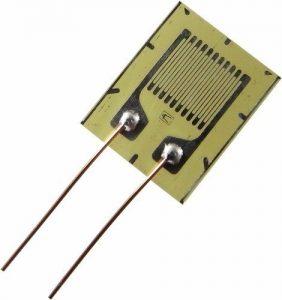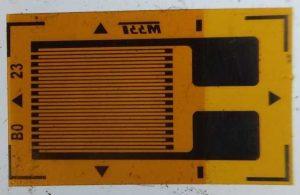
What is a strain gauge? 4 Years ago
A strain gauge is a piece used to measure bending. This piece was invented in 1938 by Edward E. Simmons and Arthur C. Ruge.
The strain gauge is usually a piece of thin foil, and it is attached to the metal piece using special adhesives. As the shape of the foil piece changes, its shape changes and its electrical resistance changes. The change in electrical resistance is usually measured using a Wheatstone bridge.


In practice, to measure the resistance of the strain gauge, a voltage between 5 and 12 volts is usually applied to the Wheatstone bridge and the output voltage of the bridge is measured. The output voltage is about a few millivolts.
Strain gauge sensors are used in many cases, but the most common application is to measure pressure or bending.

